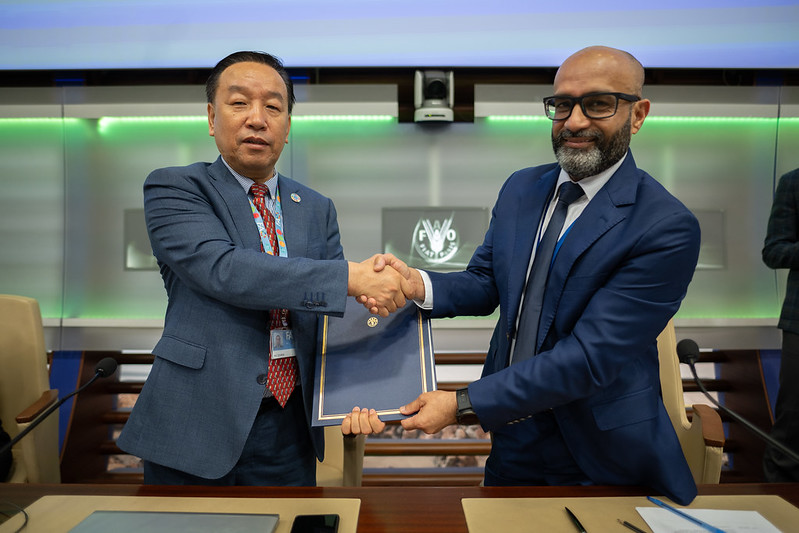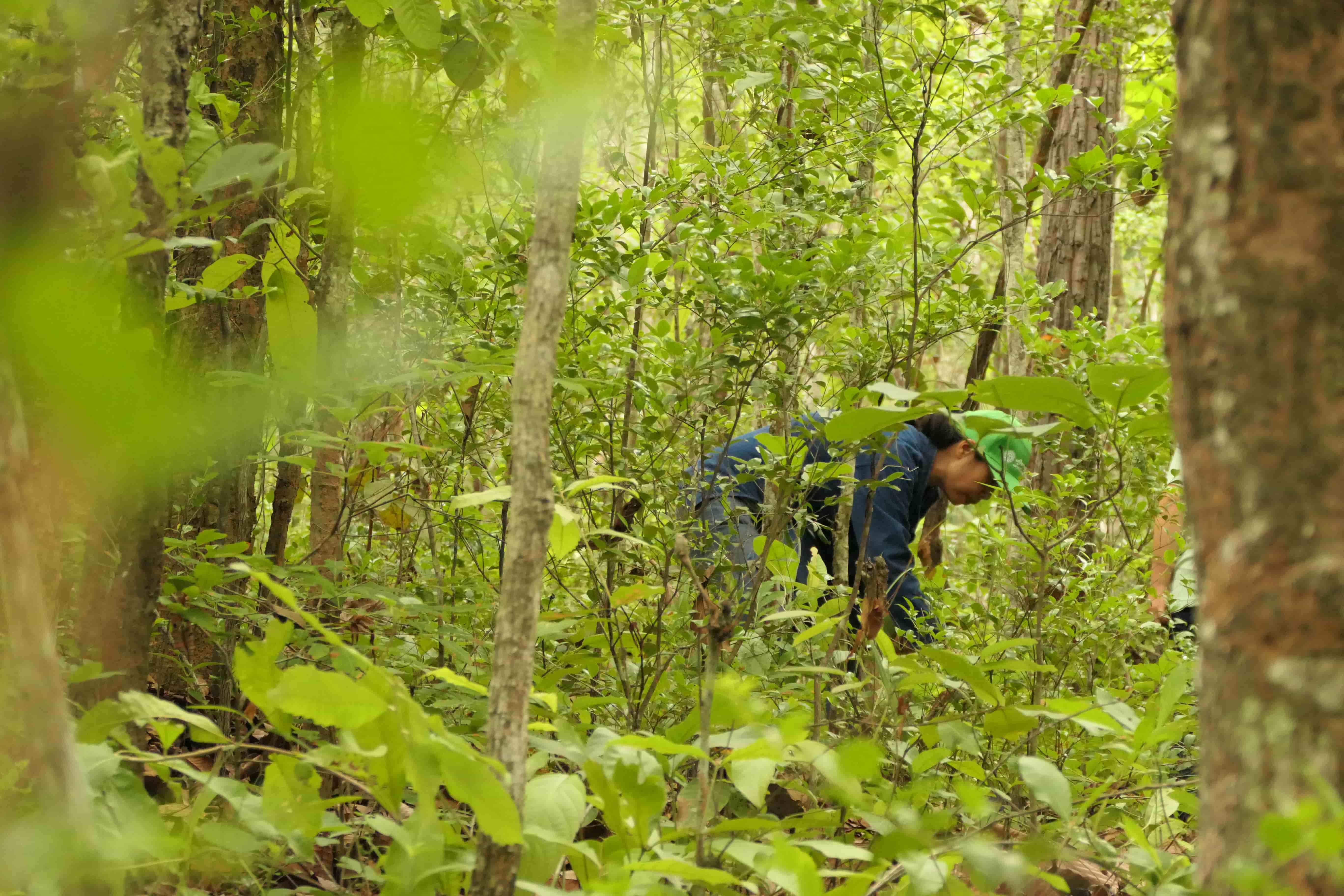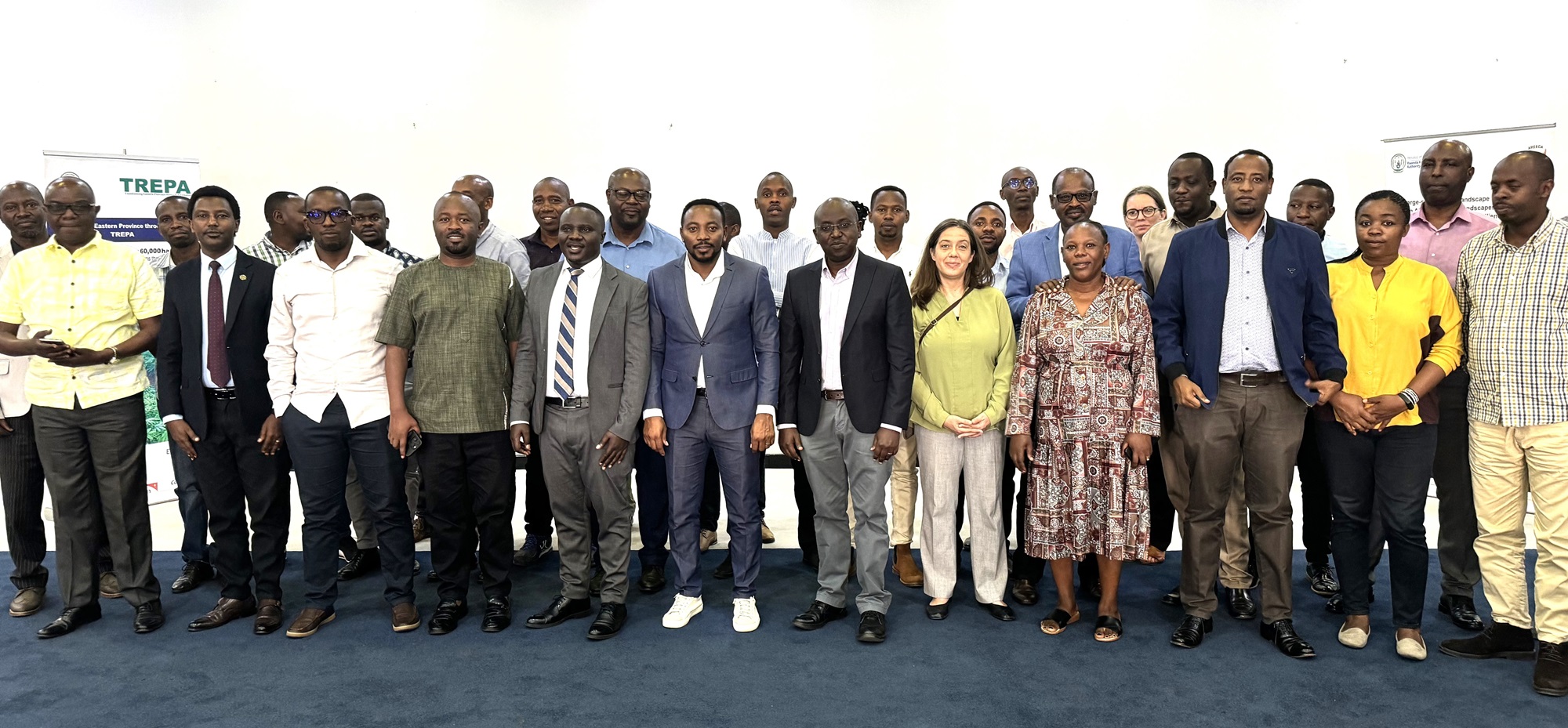IUCN and FAO sign joint agreement to facilitate data sharing to reach GBF Target 2
Rome, Italy, 24 July 2024 – The International Union for Conservation of Nature (IUCN) and the Food and Agriculture Organization of the United Nations (FAO) today signed a new partnership agreement aimed at streamlining ecosystem restoration reporting as part of Target 2 of the Kunming-Montreal Global Biodiversity Framework (GBF).

Chetan Kumar, Global Head, Forest and Grasslands, IUCN and Zhimin Wu, Director of FAO’s Forestry Division after signing the agreement
Through this agreement, IUCN and FAO will work together to improve the reporting progress against GBF Target 2 by sharing data and building synergies between two key tools: IUCN’s Restoration Barometer and FAO’s Framework for Ecosystem Restoration Monitoring (FERM). IUCN and FAO will pilot the protocol in select countries, with the goal of scaling-up an improved monitoring and reporting methodology to support parties to the Convention on Biological Diversity.
“The IUCN Restoration Barometer was built with adaptability in mind so that countries can apply the tool to different types of ecosystems. This partnership between IUCN and FAO will help align this tool with the FERM tool, helping to further support countries with monitoring progress towards Target 2 and speeding up the vital restoration of nature,” said Chetan Kumar, IUCN Global Head, Forest and Grasslands.
Zhimin Wu, Director of FAO’s Forestry Division, said: “Through the FERM platform, FAO is streamlining data flows from different platforms, such as IUCN's Restoration Barometer, and from multilateral environmental agreements to reduce the reporting burden for countries and support them in reaching their restoration targets.”
Biodiversity loss poses a major threat to ecosystems and human well-being alike. As an increasing number of species become threatened with extinction and more habitats than ever are degraded and destroyed, community leaders, policy makers, and conservationists alike have recognised the need for targeted intervention. The Kunming-Montreal Global Biodiversity Framework aims to halt and reverse much of this biodiversity loss by 2030. Of the 23 targets adopted by the GBF, Target 2 specifically aims to restore 30% of all degraded ecosystems. The Barometer and FERM tools have been embraced by decision makers as innovative tools for monitoring and tracking progress on this Target.
The IUCN Restoration Barometer is used by national and sub-national governments to track progress on the implementation of restoration targets across all terrestrial ecosystems, including coastal and inland waters. Currently used by over 22 governments—and endorsed by over 50—the Restoration Barometer’s core principles of flexibility and inclusivity allow users to report not only on the area of land under restoration, but how that restoration benefits people, wildlife, ecosystems, and climate.
In support of the UN Decade on Ecosystem Restoration, FAO and partners developed the Framework for Ecosystem Restoration Monitoring (FERM) through the UN Decade Task Force on Monitoring. FERM builds on and complements, existing international, regional and national reporting processes, their goals, targets, criteria and indicators. Its consistent and transparent monitoring and reporting methodology allows countries to report on progress towards both the UN Decade and GBF Target 2.
By working together, IUCN and FAO will better align the Restoration Barometer and FERM with Target 2 reporting requirements, facilitate data sharing between the two platforms, and deliver technical training and capacity support while gathering stakeholder feedback in pilot countries, all while maintaining strict data quality control measures.
The end product will be a robust methodology and data sharing network that will aid governments in reporting on ecosystem restoration and subsequent biodiversity, socio-economic, and climate impacts. Through this agreement, IUCN and FAO will aid societies in restoring ecosystems and conserving nature for current and future generations. Ultimately, the lessons learned from this collaboration will be scaled and shared across countries to resolve some of the greatest ecological challenges currently faced by the international community.



